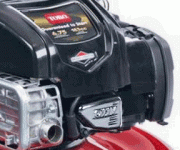I definitely find cascode and mu-follower nice circuits.
Even common cathode with active load, or pseudo-SRPP, look better than just a single common cathode, with resistive anode load.
From an "aesthetic" point of view, I'd like to build them 🙂
But we can get much higher gain and probably distortion, by using two individual stages, which we can bias independently.
Cascodes are more useful in RF, and if just going for voltage gain, two stages will always beat them.
I only see some advantage in the mu-follower, as its output impedance is low, and two simple stages (common cathode + cathode follower) won't reach as high voltage gain.
So, don't you think a very nice sounding amplifier can be made just using plain common cathodes and common anodes?
It seems to me that more complex circuits could yield just a marginal benefit, that just isn't worth the money and the time.
Of course I'd like to use more complex circuits, from an (almost I could say) "artistic" point of view, or for the pleasure of it. But this thread is just about pure technical specs.
And of course, not talking about great ideas as the Baby Huey 🙂
Just simple basic topologies (input stage+phase split+driver+output stage).
Just simple nice stages?
Better to get more sophisticated?
Please, comment 🙂
Even common cathode with active load, or pseudo-SRPP, look better than just a single common cathode, with resistive anode load.
From an "aesthetic" point of view, I'd like to build them 🙂
But we can get much higher gain and probably distortion, by using two individual stages, which we can bias independently.
Cascodes are more useful in RF, and if just going for voltage gain, two stages will always beat them.
I only see some advantage in the mu-follower, as its output impedance is low, and two simple stages (common cathode + cathode follower) won't reach as high voltage gain.
So, don't you think a very nice sounding amplifier can be made just using plain common cathodes and common anodes?
It seems to me that more complex circuits could yield just a marginal benefit, that just isn't worth the money and the time.
Of course I'd like to use more complex circuits, from an (almost I could say) "artistic" point of view, or for the pleasure of it. But this thread is just about pure technical specs.
And of course, not talking about great ideas as the Baby Huey 🙂
Just simple basic topologies (input stage+phase split+driver+output stage).
Just simple nice stages?
Better to get more sophisticated?
Please, comment 🙂
Depends on what your end goal is, really. Find what you want to do, and figure out the best circuit to do the job. Compare other topologies to the chosen circuit, and find where they work better or worse. Often times simple will do just fine, but other times complex (or compound) circuits may do better at little more than a few components added and another socket/tube.
SRPP (which I personally don't care for, it's rarely used somewhere it needs to be, and is overly trendy) or totem pole isn't always the best choice if all you need to do is swing 30Vpp to drive a power triode, when a simple grounded cathode with a resistor load will do.
SRPP (which I personally don't care for, it's rarely used somewhere it needs to be, and is overly trendy) or totem pole isn't always the best choice if all you need to do is swing 30Vpp to drive a power triode, when a simple grounded cathode with a resistor load will do.
Think of a cascode as a "synthetic" pentode. Composite gain is function of the "bottom" device's transconductance, not μ. Like a pentode, CMiller is very rarely an issue, with cascodes. Also, like a pentode, the O/P impedance of a cascode is high. Unlike a pentode, partition noise doesn't enter the calculus. Everything has its costs and non-existent PSRR is (IMO) the principal cost of cascodes.
Stage gain in a cascode can be very large. Consider the 6C45Π (6s45p), with its gm of (sic) 45 mA./V. A gain of several hundred times will be realized working into a net load impedance of 10 Kohms.
Stage gain in a cascode can be very large. Consider the 6C45Π (6s45p), with its gm of (sic) 45 mA./V. A gain of several hundred times will be realized working into a net load impedance of 10 Kohms.
Last edited:
...we can get much higher gain and probably distortion, by using two individual stages...
Obviously.
...don't you think a very nice sounding amplifier can be made just using plain common cathodes and common anodes?
Gee, did that ever happen? Williamson, Marantz, Macintosh, the original 4-6V6 Fishers, even perhaps Dynaco....?
No, this is pure fashion. OHV engines are only marginally better than flatheads; in the same space a flattie can make more Power (by being taller without valveworks denting the hood). Yet the OHV fad is so strong that even my new lawnmower is OHV, and says so boldly on the rocker cover.
(OHC has advantages in HIGH-speed work, but for plebeian engines it is more about saving a few cents.)
Attachments
- Status
- Not open for further replies.
